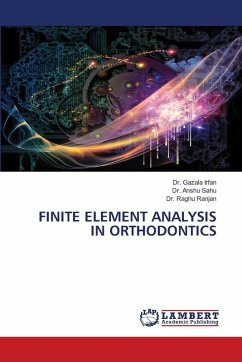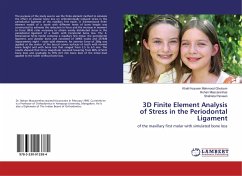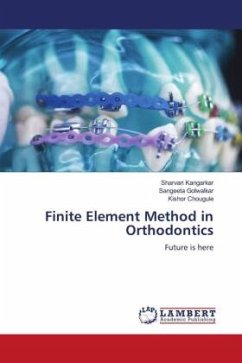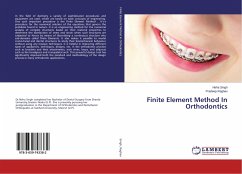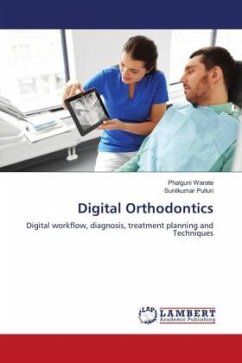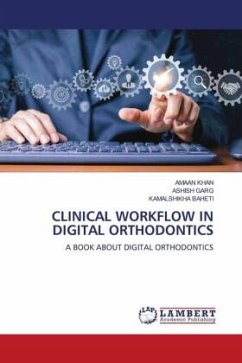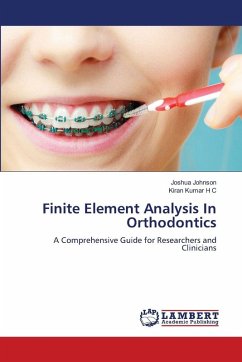
Finite Element Analysis In Orthodontics
A Comprehensive Guide for Researchers and Clinicians
Versandkostenfrei!
Versandfertig in 6-10 Tagen
29,99 €
inkl. MwSt.

PAYBACK Punkte
15 °P sammeln!
This comprehensive text explores the principles, applications, and clinical relevance of Finite Element Analysis (FEA) in orthodontics. Beginning with the origins and evolution of FEM, the work details its foundational concepts in structural engineering and transitions into its growing role in biomedical and orthodontic research. It highlights how FEA provides a non-invasive, precise, and evidence-based approach to studying complex oral biomechanics-especially in understanding tooth movement, periodontal stress distribution, root resorption, and craniofacial orthopedics.Key sections include th...
This comprehensive text explores the principles, applications, and clinical relevance of Finite Element Analysis (FEA) in orthodontics. Beginning with the origins and evolution of FEM, the work details its foundational concepts in structural engineering and transitions into its growing role in biomedical and orthodontic research. It highlights how FEA provides a non-invasive, precise, and evidence-based approach to studying complex oral biomechanics-especially in understanding tooth movement, periodontal stress distribution, root resorption, and craniofacial orthopedics.Key sections include the step-by-step process of FEM modeling, boundary condition assignment, material properties, and result interpretation using color-coded stress maps. The work also compiles an extensive literature review, summarizing over two decades of studies applying FEA to topics such as orthodontic force systems, maxillary protraction, rapid maxillary expansion, and skeletal anchorage. Limitations such as modeling errors and the challenge of simulating biological tissues are acknowledged, while the method's advantages in improving orthodontic treatment planning and mechanotherapy are emphasized.



